Many times people discover AirCrete through pictures of domes and think that is the shape of AirCrete. The reality is that you can make your AirCrete House Round or Rectangle.
AirCrete is a reasonable strong as a structure under compression, that is weight pushing straight down or in an arch or dome. So, this means most normal shapes and even irregular shapes work fine.
The reason many structures has a adobe plaster look is because AirCrete is a composite building material requiring a fiber coat to be bonded to the surface to add tensile strength. If this plaster look is not appealing to you consider brick, stone, or other veneer coatings.
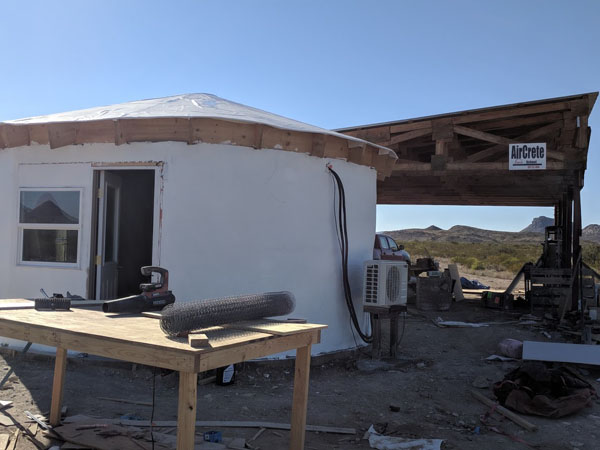
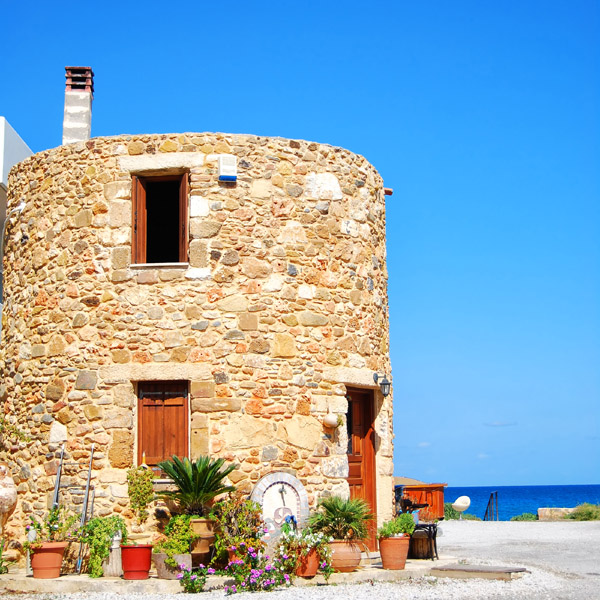
A round shaped house situated on the Greek isle of crete.
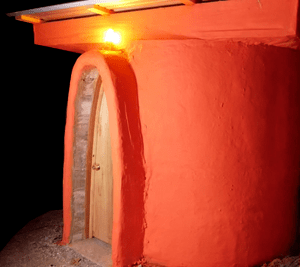
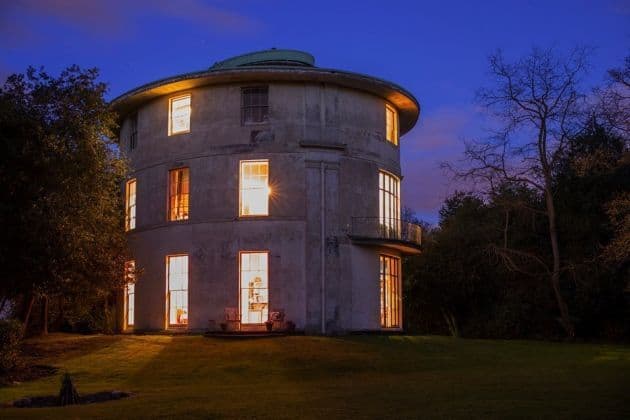
Round AirCrete Structures
The above round structures are especially storm resistant because of their shape and low coefficient if drag. Cylinders have many of the energetic qualities of a dome, but can be cast rapidly for easy builds. A Flat or cone roof can be put on top though a cone shaped AirCrete Roof is not an options unless you place a decking under it and set panels or blocks on top. However, that would not be practical. Most typically a more conventional roof is built on top of the AirCrete walls.
Round structures like domes require thinking differently about furniture layout. Its best to place furniture inside facing outward to avoid large dead spaces behind furniture. Also cabinets on outer walls will be very custom requiring more time and expense.
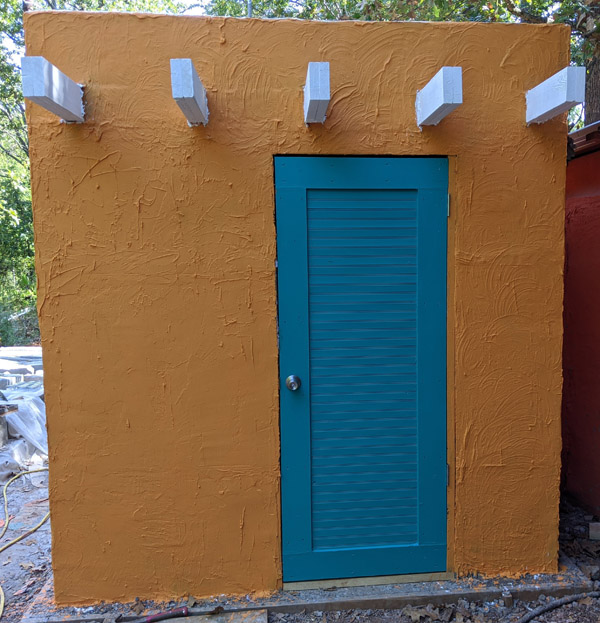

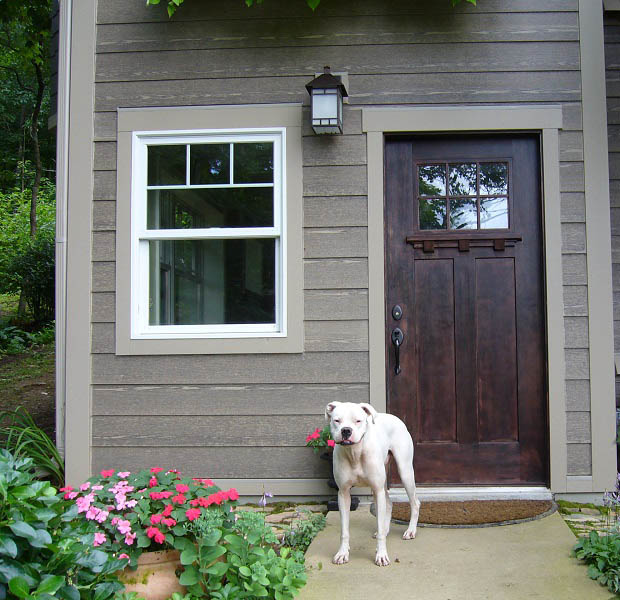
Rectangle or Square AirCrete Structures
Square & rectangular houses are are easily and rapidly cast. The top examples are pueblo/Adobe style houses with flat roofs. However, it is very simple to attach a conventional double angle or hip roof to the top bond-beam. This would give a more "normal appearance." These can also have brick, stone, or rock veneer placed on the outside. Its also possible to mold a lap siding look into the structure.
If you like the lap siding look its possible to cast the AirCrete in a mold to give the shape of lap siding. Then its just a matter of adding trim work to complete the look.

This Year at the Terlingua School of Alternative building we are teaching/building Off-Grid rectangle Pueblo/Adobe style AirCrete Building. These same structures can have a conventional roof on them as well. If this is something that interest you click here to check out the event page for the Terlingua School of Alternative Building.
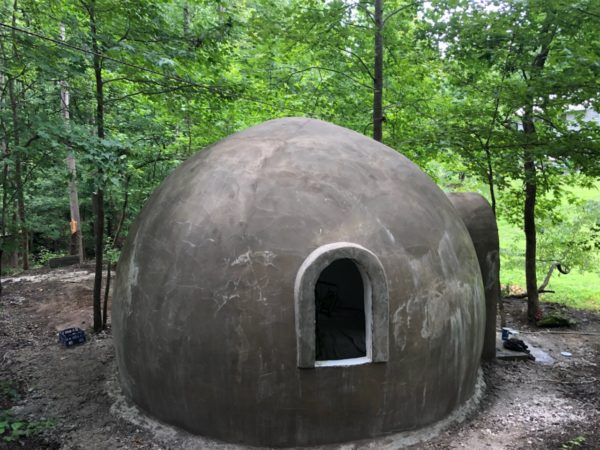
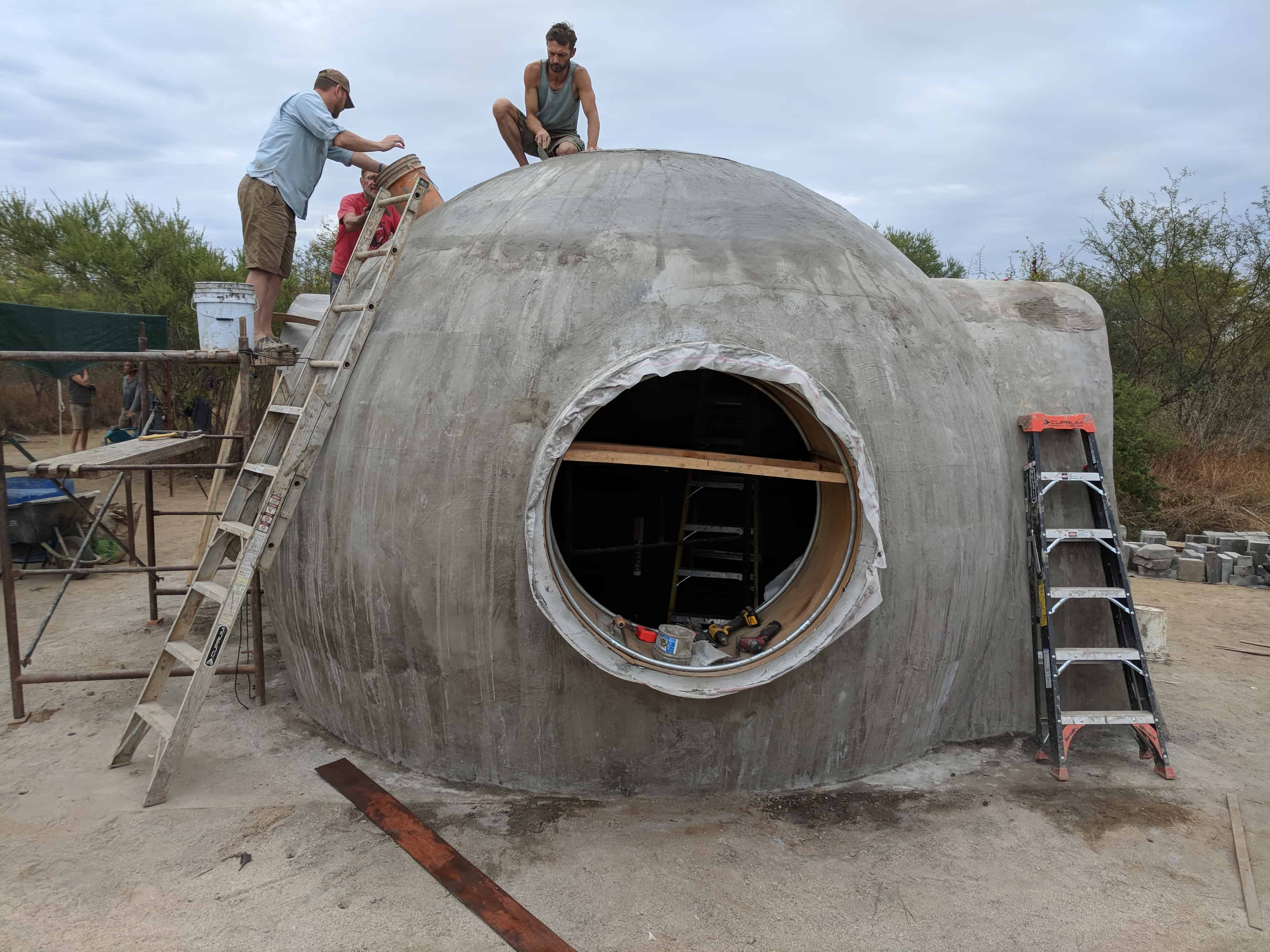
Dome AirCrete Structures
Then, of course, there is the dome shape. Domes like arches are compressive structures so the weight above pushes it together and gains strengths. Also, storm resistant domes are very safe.
Many people ask why the dome are lifted up or why they are more spherical. This could be for artistic look, but mostly they are lifted so you done knock your head on the wall when you walk near the edge. It is also entirely possible to use a straight-rising stem wall to gain head room. As artistic as the tuck-under is of many domes it does weaken the potential strength of the structure.
Arch AirCrete Structures
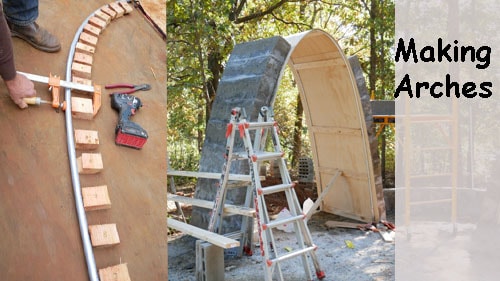
It is also possible to build an arch shaped cabin or house. This typically requires temporary forms to place blocks against until the arch is closed and cured. It may also be possible to build reusable forms to cast AirCrete into, but I have not tried this yet.
